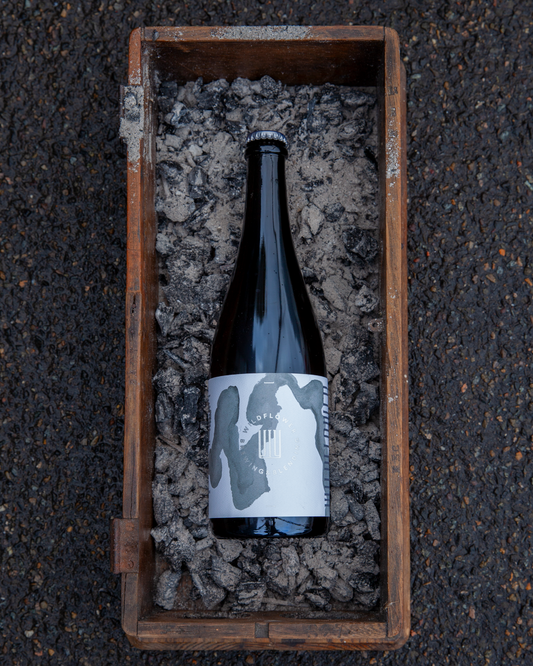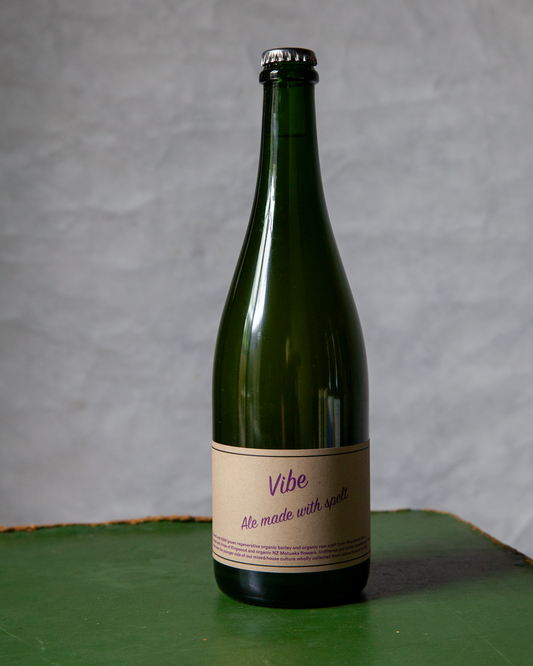This is the second post in an ongoing series. This series, 'Process', focuses one-by-one on specific elements of how we make our beer. The first post on fermentation geometry can be found here.
The undeniable distinction of our beers is their yeast characteristic. As we have mentioned before, all of our beers at Wildflower are fermented with a mixed culture of brewers yeast along with a host of wild yeast that we foraged from around New South Wales, Australia. This means that our beers will taste like no other, because no other brewers use the same diverse mixture of native yeast as we do. We know a number of brewers who are making beers with wild yeast, but they have captured different organisms than we have from different places, giving their beers their own sense of place.
This all sounds well and good, evoking this image of me frolicking out in a field somewhere with my Opinel knife and a net, yeast-catching like the BFG, coming home with a few morel mushrooms in a wicker basket. Well, it's not that glamourous... but it is a ton of fun. Hopefully here I can share a few tips that may help any curious brewer muster the courage to try it themselves.
So, how did we develop our house culture? The shortest answer is trial and error. Here is the long answer:
Wrangling, foraging, culturing, bioprospecting, domesticating
What we did is known in the brewing community under a few different terms. For the sake of this article, lets just call it wrangling. This is literally the process of going out into your own environment, finding a yeast source and then working with that in a number of ways to make it useful to you in the future... to say make beer.
The general method
My preferred method of wrangling, and indeed what we did for most of the wild yeast in Wildflower's house culture, involves making small batches of beer using fruit or flower cutting to entirely ferment the small batch, then tasting it a while after. My method is very similar to the one proposed here by Garrett Crowell when he developed the house culture for Jester King. My main alterations in the process surround volume and gradual sensory culling.
So to start, I prefer using at least 1 l of unhopped 8-10P (1.030-1.040) wort. Simple DME boiled in an erlenmeyer glass works perfectly for this. I like to go with a larger volume in order to minimise ongoing oxygen contact, which leads to acetic acid production from acetobacter. DME boiled in an erlenmeyer glass is also great because you can guarantee a sterile environment before inoculation with your fruit, flower etc.
Once your unhopped wort is cool, you want to simply insert your cutting into the wort, allowing whatever yeast is on the skin/surface of the source to kickstart fermentation. Seeing signs of fermentation within 1-3 days is a good sign of a viable yeast collection, however some fermentations may take longer to start.
Once the fermentation has started (ie the airlock is bubbling or there is a visible krausen) it is best practice to wait at least one month to taste the beer. My general method relies on flavour as the definitive measure of whether a capture is worth maintaining or not. After one month if the beer has an aroma of vomit or faeces, you have a bad bacterial infection that you will not overcome. It nearly goes without saying, but do not try these ferments. They could be harmful to your health. For more info and safety measures, see this post from Milk the Funk. If it smells of fruit, bread or beer... well then you might have something worth keeping. If it tastes good, you probably do have something worth keeping.
Once you have a culture that smells/tastes interesting, I have found it best to move the liquids off the solids (ie, get the beer/yeast away from the fruit/flowers). I generally pour the liquids into a larger (say 4-5l) of again unhopped wort to not only inoculate a larger volume of wort but also to demote mold growth (see below).
From here you can do any number of things- ferment a beer with it; plate the culture out and isolate a few strains, put the slurry on a slant and save it for another time; keep feeing it as is to save it for another time, etc. I prefer a feed and test method, meaning I would keep the capture alive in one vessel and draw from it for separate fermentation tests with hopped wort or with other captures in beer, all kinds of things. But how you handle it is entirely up to you.
Alterations/tips on the method
- hop the wort a little to limit bacteria growth. Remember hops are anti-bacterial.
- work with a larger inoculation, ie more flowers, fruit or the likes. It could yield different results.
- co-pitch with your favourite clean yeast strain. This makes your wild yeast inoculation smaller in relation which can be beneficial for some flavours of mixed fermentation.
- Mold growth is not a good sign. Having solids above your liquid wort will promote mold, which is why it is good to move the liquid off the solids once you have a capture. I usually see mold as colourful whereas a pellicle, on the other hand is white, generally not fuzzy like mold. If you are wondering what you have, tweet us a photo and I'll do my best to diagnose.
- Spring and Summer are good times for flowers and fruit captures. Autumn and winter are great for sap, wood and spontaneous ferments. Remember, yeast needs sugar to live, so go to where the sugar is. Follow the bees, they will show you.

Our culture
Our house culture is a blend of Dupont saison yeast, bugs and critters wrangled from NSW in the exact fashion explained here and yeast from successful small scale (50l) spontaneous fermentations. For more information on spontaneous captures, see this post from Milk the Funk.
Over the year of 2016, I made all kinds of cuttings of all kinds of things. Our home was that of a mad scientists, an airlock symphony. After a while, I had to do the inevitable, cull and blend. I would say that from all my captures, about 1 in 4 was worth keeping. Over time what I would do would be to blend yeast from a few of the captures together and make a beer with it, taste it, see if I liked it then add some other culture or not. Basically it was the same as before but with larger volumes. Don't let this sound too analytical either, if it tasted good... then it got to stay alive.
Predominant in our culture are captures from early-Winter wattle blossoms, wild dandelions, wine grapes and a few spontaneous fermentations. Once I had blended these captures together I brewed with the culture for a while to get a small understanding of it. For our first fermentation at Wildflower, I co-pitched into the fermentor about 5 l of the Dupont strain slurry along with an entire 20 l carboy of my eventual culture. Since then, the culture has drifted and I handle it in different ways to try to keep it in check. But this is a topic all on its own.
____________
One thing I have noticed perhaps the most is that good wrangling practice is more important than the source of wild yeast itself. Just because I had a nice capture from wattle, say, does not guarantee that you will. I have attempted captures side by side with the same source with one working and another not. Patience, trial, and acceptance of failure are part of the process. Last important thing to stress is that your house culture, over time, will find its own groove. We still aren't there yet at Wildflower... maybe another year, but the eventual balance of populations in that house culture are a function of how you handle your yeast. How you feed it, how you ferment with it, how you collect it. My advice then, is to manage the culture along with the ebb and flow of your own life. If you get OCD about it from the start you will need to keep being super pedantic about how you collect, feed or otherwise and to maintain whatever flavour you had from the start. I prefer to work together with my culture rather than engineer it.
Lastly, if you have any questions about wrangling wild yeast feel free to email us at info@wildlfowerbeer.com and we will do our best to answer them. Besides that, there is an amazing community of funky fermentationists on the Milk the Funk Facebook group.
Happy wrangling!
best,
topher




